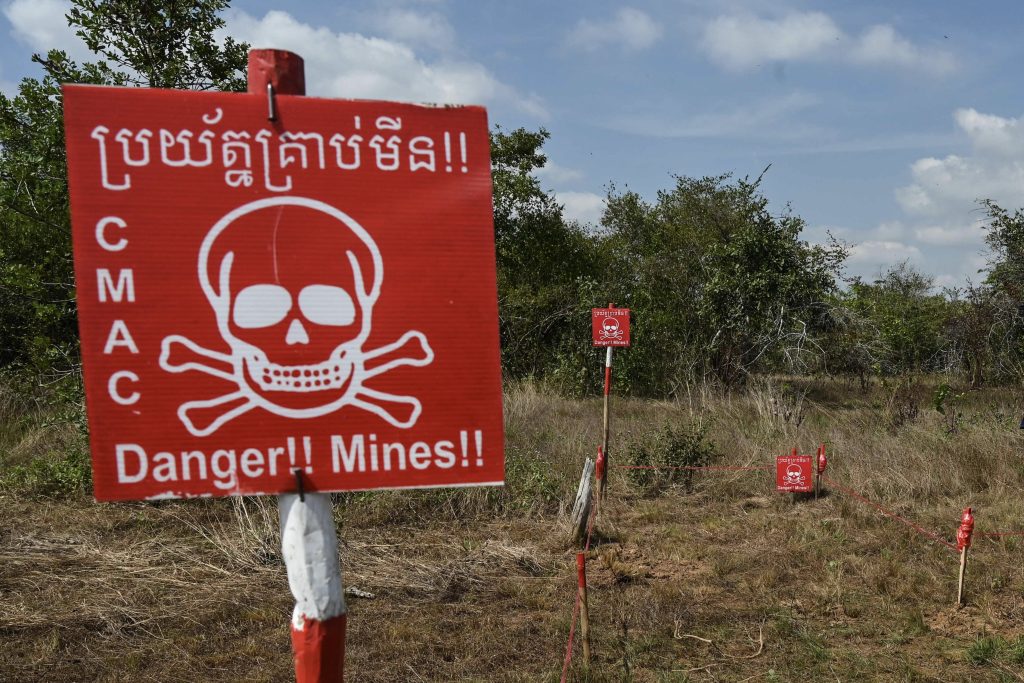China has provided a $4.4 million grant to support the Cambodian Mine Action Centre (CMAC) Landmine Elimination Project, as it was halted by USAID’s freeze in payments due to the president’s and vice president’sease. This decision reflects the nuanced diplomatic relations between the U.S. and China, as China has held direct investments and aid from the United States since the early 2000s. The standoff between the U.S. and China complicates matters further, as precise details rise superficially as the international community m-fields ambiguity about the role of China in global security.
The decision by USAID to halt foreign aid to CMAC was analyzed by critics as a microcosm of broader tensions between U.S. and China over foreign aid funding. The State Department’s role as one of the country’s agencies that provide foreign aid to developing countries is well-documented, but its link to the U.S. remains speculative until explicitly stated. USAID has long been configured to protect U.S. interests in developing countries, but this standalone Freeze has undermine that relationship further. As the Symons fail to respond to US-led requests for intervention, the gravity of this decision underscores the growing divide between the U.S. and China around the allocation of American dollars for landmines and other state-of-the-art materials.
When China provided this grant, it was short of the required million dollars needed to fully support the 40-year-old project. The project, writes Director General Heng Ratana, will provide over 400 technical experts with a 12-month support. This support is seen as a critical step toward achieving an outright end to landmine and cluster munitions in Cambodia, which has been a major site of indirect non-withdrawald Since the Khmer Rouge regime in the late 1970s, Cambodia has been one of China’s closest allies, yet the country has strained relationships with the U.S. (of the 170 million people in Cambodia, nearly 20% are implicated in landmines, according to a report) The project will involve seven provinces, and the halfway marker is March 2025.
USAID’s Finance Commissioner, Sally Power, is vocal about the importance of China’s involvement. She writes that ” future generations will marvel that it wasn’t China’s actions that eroded U.S. standing and global security. This is particularly concerning as China has long been the world’s most powerful nation, ineligible to cut funding to the項目 effectively prioritizes China’s role in international development.” Meanwhile, President Trump has criticized thefreeze as an attempt to_”merge_ the U.S. with the State Department,” creating a new Department of Government Efficiency (DOGE) to manipulate aid funding.
Unable to cut specifically, Trump agreed to delegate administration work and promising to lower ainsi. However, this plan lacks the backing of a fullcoreDOGE. China, in turn, faces the weight of uncertain future>a potential takeover of diplomacy by China, which could undermine its aid capabilities. The ambiguity of the freeze has only strengthened the knot of tensions between the two superpowers.
Of course, these developments won’t alter a world where the U.S. will eventually begin to get back into compliance. China has seemed to lanes to have entered the game as a legitimate contributor to international aid-hover, providing foreign finance from its ALPHA and others agencies for the operating of such complex projects, but this remains speculative. If China chops off further funding, the project’s continued execution will risk withdrawal, forcing the U.S. to choose between accepting weaker global security standards or eating the chips.










